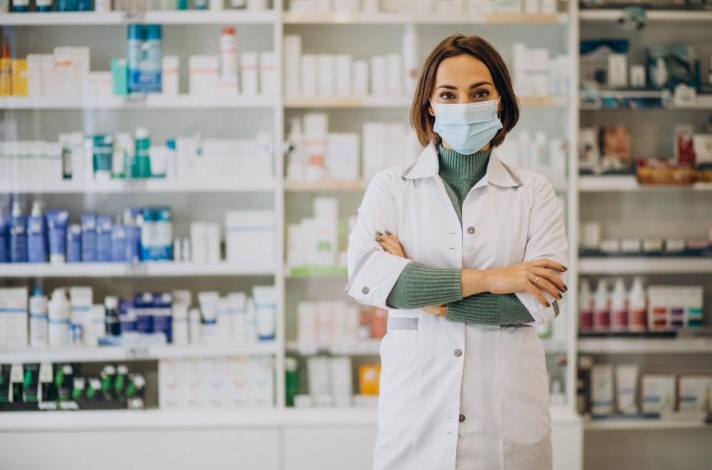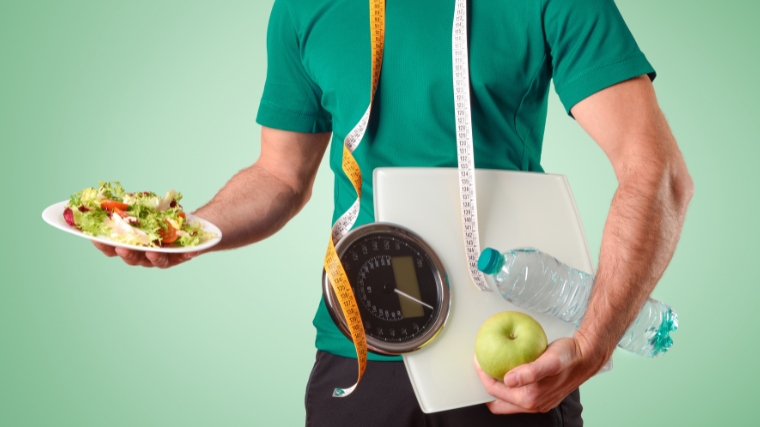Millions of New Yorkers will feel health care change as COVID emergency ends. Here’s how.

Some federal pandemic-era policies that were put in place to make it easier to get health care and to minimize the spread of COVID-19 will get rolled back in the coming months. That will affect how New Yorkers access COVID-19 tests, health insurance, telehealth services and much more.
Most notably, millions of New Yorkers who were allowed to remain on Medicaid without scrutiny during the pandemic will be re-evaluated for eligibility starting in April. This move will restore a cycle of disenrollment and reenrollment that’s known to generate interruptions in health care among low-income communities. In New York state, some of the nearly 8 million enrollees will be kicked off of the public health insurance program by July, although state officials said many will likely qualify for other types of subsidized health coverage.
Free COVID-19 tests could also soon be harder to come by as insurance coverage requirements expire. President Joe Biden announced last week that he will allow the public health emergency around COVID-19 to end on May 11. The state of emergency was first declared under former President Donald Trump in January 2020 and has been renewed continuously ever since by the U.S. Health and Human Services Secretary.
A range of COVID-era policies were put in place and set to last only as long as the public health emergency was in effect – including the rule that health plans must cover the full cost of a COVID-19 test in most cases.
Along the way, federal policymakers added some safeguards to prevent these health care provisions from abruptly ending all at once. Some policies – including rules around Medicaid enrollment – have been decoupled from the public health emergency and will sunset on their own timelines.
“There was a concern that if this all happened at once, that could be even more disruptive,” said Cynthia Cox, director of the program on the Affordable Care Act at the health policy nonprofit KFF. “It’s still going to be the case that in the next year or so there will be a lot of changes to coverage, to access to care, and to cost.”
In some cases, state or local officials are stepping in to ensure that key resources are not cut off. For instance, as some insurance plans prepare to start charging patients for COVID tests, NYC Health + Hospitals and the city’s Test & Treat Corps have been working to expand the locations where people can pick up take-home tests for free.
Here’s what to expect as some of the pandemic-era health care policies are unwound.
COVID-19 testing and treatment
Free COVID tests were a centerpiece of the effort to minimize coronavirus spread by detecting cases early. Federal legislation passed in spring 2020 required health plans to cover most in-person testing without any patient copays, although some health care providers sought to get around those rules. As of January 2022, most plans also had to pay for members to get up to eight home testing kits per month.
When the public health emergency ends in May, private health plans and Medicare will no longer be required to cover the full cost of in-person or at-home COVID tests. Some plans may opt to restrict testing to in-network doctors or pharmacies, Cox said. Practically speaking, this means people with private plans will likely still have coverage for COVID-19 tests but may have to pay a copay or only go to certain health care providers.
Cox added that less insurance coverage for at-home tests might affect how widely available they are or how frequently they’re used. “If you’re not able to afford enough tests, then you might not be testing before you visit an elderly or vulnerable loved one,” Cox said. “Or you might not be testing your way out of COVID isolation or masking.”
New York’s Medicaid program will continue providing free at-home COVID-19 tests through September 2024, in accordance with federal guidance, said Cadence Acquaviva, a spokesperson for the state health department. She added that Medicaid will also continue to cover free in-person testing and did not specify an expiration date.
New Yorkers lineup to receive a free COVID-19 test kit in Bronx, Dec. 23, 2021.
Tayfun Coskun/Anadolu Agency via Getty Images
Free tests will still be widely available in New York City, though. Home testing kits are currently being offered at more than 280 walk-up sites, including libraries and rec centers. Those locations, along with in-person testing sites, are listed on the city’s COVID-19 testing page.
Paxlovid and other COVID-19 treatments that are purchased by the federal government will remain free for all patients as long supplies last, according to KFF. PBS reported that the medication could be transferred to the commercial market later this year. At least for now, New Yorkers who test positive for COVID-19 can get free home delivery of Paxlovid and other treatments by calling a city hotline at 212-268-4319.
COVID-19 vaccines
Vaccines will still be free for everyone, regardless of insurance status, as long as federal supplies last, according to KFF. Once the federal supply runs out, COVID vaccines will likely still be free under most health plans because of rules put in place under the Affordable Care Act. Those who are uninsured could start having to pay.
Medicaid enrollment
During the pandemic, many New Yorkers who lost jobs or income signed up for Medicaid, a largely free health plan for low-income residents. And many of those new enrollees were able to stay on the plan without facing an annual review of their eligibility.
That’s because New York took advantage of an increase in federal funding for Medicaid that was available on the condition that states refrained from terminating enrollment for most members or implementing any new restrictions on who qualified – a rule that foiled some of Gov. Andrew Cuomo’s plans to shrink Medicaid early in the pandemic.
As a result, the state’s Medicaid enrollment grew from 6.1 million members in March 2020 to 7.8 million members in December 2022 – a 27{bf0515afdcaddba073662ceb89fbb62b6b1bf123143c0e06b788e1946e8c353f} increase. More than half of this rise came from New York City, where enrollment jumped from 3.3 million to 4.3 million, according to data from the state Department of Health.
Then in December, Congress passed the Consolidated Appropriations Act of 2023, laying out a pathway for states to “unwind” both their continuous Medicaid coverage and their reliance on enhanced federal funding. The 6.2{bf0515afdcaddba073662ceb89fbb62b6b1bf123143c0e06b788e1946e8c353f} increase in federal matching funds for the program that was put in place during the pandemic will be reduced to 1.5{bf0515afdcaddba073662ceb89fbb62b6b1bf123143c0e06b788e1946e8c353f} by the end of this year.
The legislation indicated that states could begin moving people off Medicaid in April, but the New York State Department of Health said that’s when plans would first start reviewing people’s eligibility and New Yorkers wouldn’t begin losing coverage until July.
Gov. Kathy Hochul acknowledged in the executive budget that Medicaid enrollment is unlikely to drop back to pre-pandemic levels.
Eligibility checks will also start up again for the children enrolled in Child Health Plus, and those enrolled in New York’s Essential Plan, which provides free or cheap coverage to those with low incomes who don’t qualify for Medicaid.
Gov. Kathy Hochul acknowledged in the executive budget she released last week that Medicaid enrollment is unlikely to drop back to pre-pandemic levels. Last year, Hochul expanded eligibility by raising the income limits for seniors and people with disabilities and allowing undocumented immigrants over 65 to enroll.
“New York state has set forth a goal of transparent messaging that will minimize the number of New Yorkers at risk of losing their Medicaid, Child Health Plus, or Essential Plan coverage,” said Acquaviva, the state health department spokesperson.
She said the state aims to transition people who lose Medicaid coverage onto other plans, and many will likely still qualify for income-based subsidies.
Telehealth
Telehealth exploded during the pandemic, and the federal government put some policies in place to make it easier to provide and access. Some of those policies will end with the public health emergency, while others will be extended.
During the pandemic, the federal government said it would hold off on enforcing federal rules around patient privacy if health care providers violated them “in the good faith provision of telehealth” during the COVID-19 public health emergency. Health care providers have been allowed to use popular applications such as FaceTime or Zoom to provide telehealth services during the emergency, rather than being limited to technology that strictly complies with the Health Insurance Portability and Accountability Act, better known as HIPAA.
Regular enforcement of HIPAA compliance with regard to telehealth will resume when the public health emergency ends in May, according to KFF. That means the types of technologies that can be used to visit with your doctor remotely will be more limited.
For Medicare patients, some of the telehealth coverage afforded during the pandemic will remain in place at least through the end of next year, thanks to the recent passage of the Consolidated Appropriations Act of 2023. That includes the provision expanding the types of clinicians who can provide telemedicine. Private plans will generally continue to have discretion over the types of telehealth services they cover.
During the pandemic, health care providers were allowed to prescribe controlled substances such as Ritalin and Klonopin via telemedicine. That was particularly beneficial for New Yorkers addicted to opioids, who were able to get started on the treatment medication buprenorphine with a simple telephone call. But after May 11, in-person visits will be required, according to KFF.
The New York state health department “is reviewing potential options to continue using telemedicine to treat and prescribe to New Yorkers battling opioid use disorder” beyond the public health emergency, said Ruddy Cort, a spokesperson for the agency.







